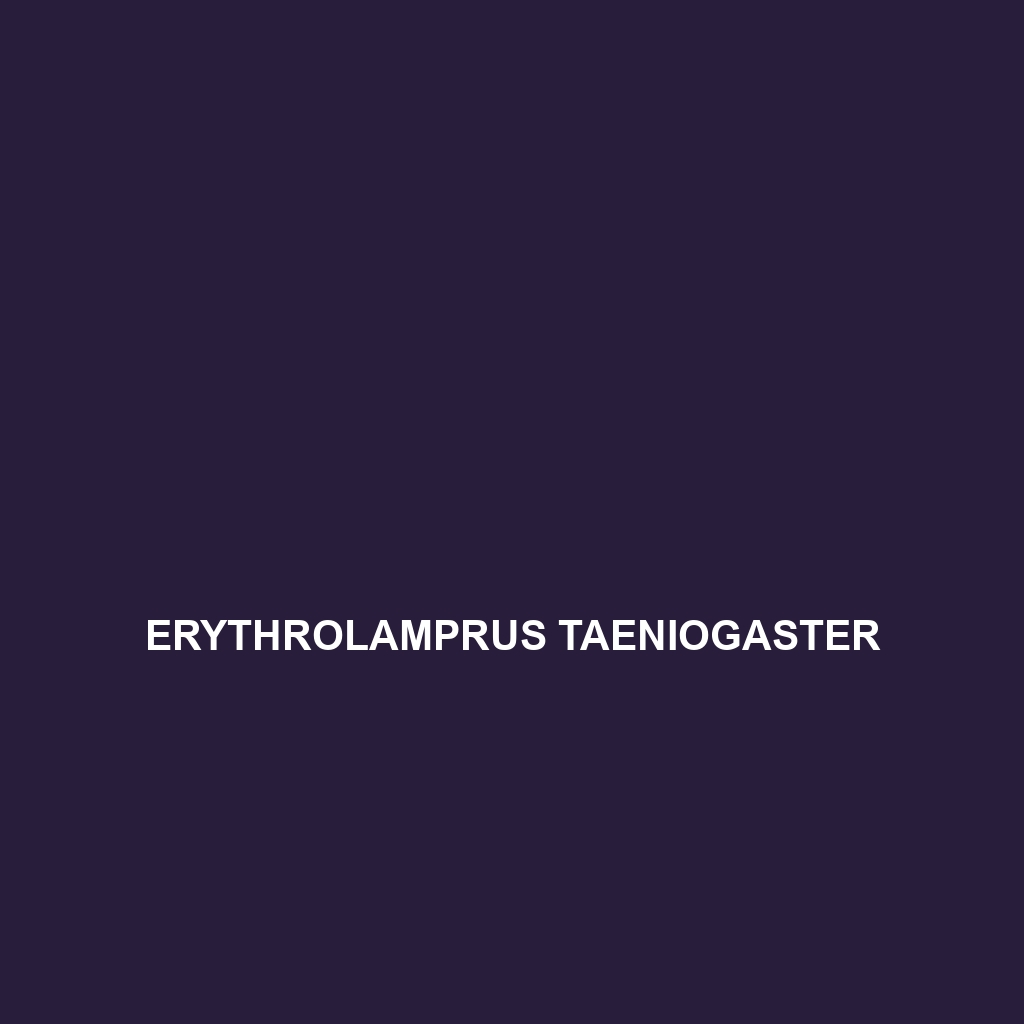Common Name
Erythrolamprus taeniogaster
Scientific Name
Erythrolamprus taeniogaster
Habitat
Erythrolamprus taeniogaster, commonly known as the striped marsh snake, primarily inhabits a variety of wetland ecosystems across South America. This species is often found in tropical rainforests, savannas, and temperate forests, specifically in low-lying, humid areas that provide ample water sources. These habitats offer the ideal conditions for hunting and reproduction, with dense foliage and abundant cover that help the snake to thrive. Additionally, Erythrolamprus taeniogaster tends to favor marshy regions, swamps, and near freshwater bodies, as these environments are rich in biodiversity and provide shelter from predators.
Physical Characteristics
Erythrolamprus taeniogaster exhibits distinctive physical traits that make it easily recognizable. Adult snakes typically measure between 0.8 to 1.2 meters in length. They have a slender, elongated body covered in smooth scales, ranging in color from light brown to dark green. The most striking feature is the series of longitudinal stripes that run along the length of its body, which can vary in color from yellow to white, providing excellent camouflage against the backdrop of its watery habitat. This coloration not only aids in hiding from potential threats but also enhances its predatory skills by allowing it to blend into its surroundings.
Behavior
This species is primarily nocturnal, displaying increased activity during the night when it hunts and explores its environment. Erythrolamprus taeniogaster is known for its evasive maneuvers and swift swimming abilities, which come in handy while evading predators. Social interactions are minimal; however, during the breeding season, males may engage in unique displays to attract females, including a series of body movements that demonstrate strength and vitality. When threatened, this snake will often freeze in place or escape rapidly into the water, demonstrating its adaptive evolutionary traits.
Diet
Erythrolamprus taeniogaster is primarily carnivorous, feeding on a diet that predominantly consists of small fish, amphibians, and invertebrates. Its hunting strategy usually involves ambushing prey from concealed positions within the vegetation of its habitat. The snake possesses a set of sharp, backward-facing teeth that help secure slippery fish during capture. This predatory diet positions Erythrolamprus taeniogaster as an essential part of the aquatic food web, controlling populations of its prey species.
Reproduction
The reproductive cycle of Erythrolamprus taeniogaster typically occurs during the warmer months when environmental conditions are favorable. Mating generally takes place in late spring to early summer, with females laying clutches of 5 to 20 eggs in moist, hidden locations. The gestation period lasts about 60 to 70 days, after which the hatchlings emerge fully developed and capable of fending for themselves. Parental care is absent in this species, as the young snakes must independently navigate their environment right after birth.
Conservation Status
The conservation status of Erythrolamprus taeniogaster is currently listed as ‘Least Concern’ by the International Union for Conservation of Nature (IUCN). Despite being widely distributed in its natural habitat, the species faces challenges such as habitat degradation and pollution due to agricultural expansion and urban development. Ongoing conservation efforts focus on habitat restoration and protection to ensure the long-term survival of this fascinating species.
Interesting Facts
One interesting fact about Erythrolamprus taeniogaster is its remarkable ability to adapt to varying aquatic environments. It can thrive in both freshwater and brackish waters, showcasing its versatility. Additionally, this species exhibits mimicry behaviors, with some individuals resembling more venomous snakes to deter potential predators, relying on visual deception for survival.
Role in Ecosystem
Erythrolamprus taeniogaster plays a crucial role in its ecosystem by acting as both predator and prey. As a carnivore, it helps regulate populations of smaller aquatic creatures, contributing to the health of the food web. This species also serves as an important food source for larger predators, including birds and mammals. By maintaining a balanced ecosystem, Erythrolamprus taeniogaster contributes to the overall biodiversity and ecological stability of its habitat, making it a key player in the environmental web of life.
